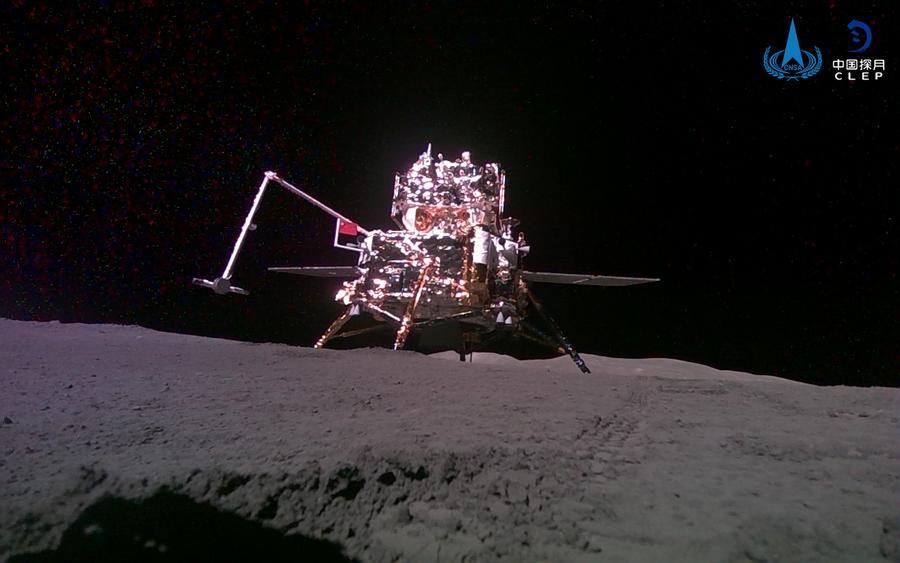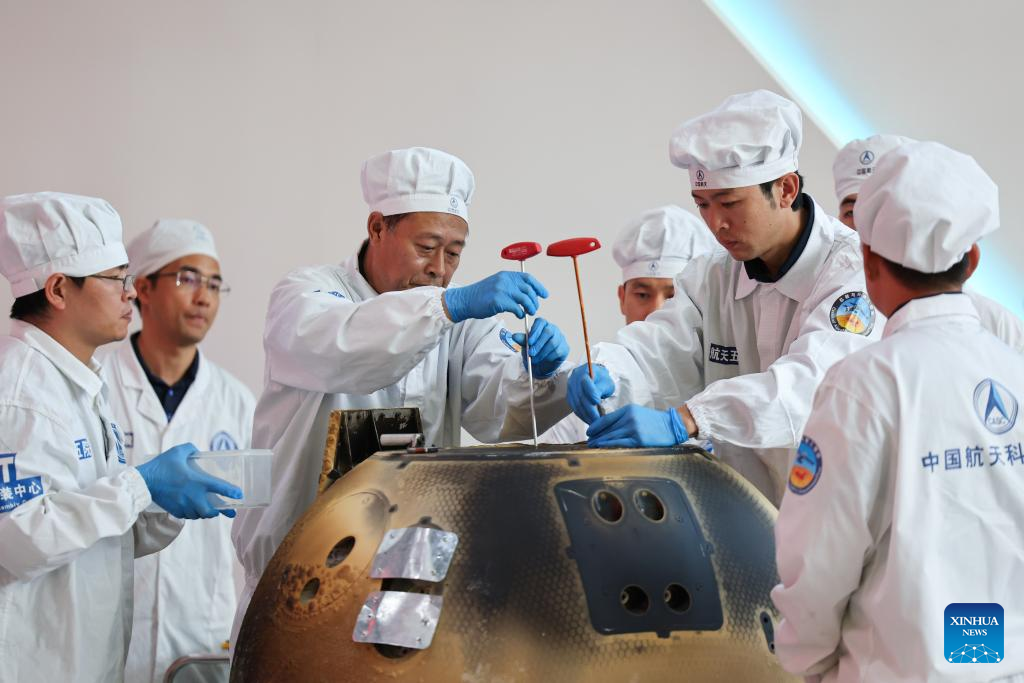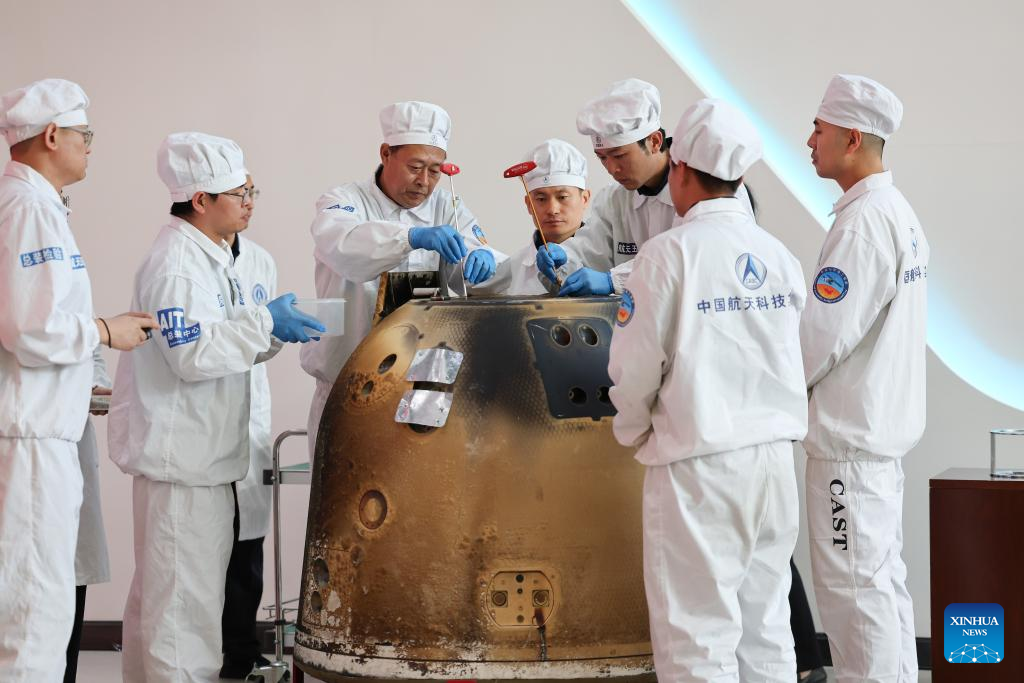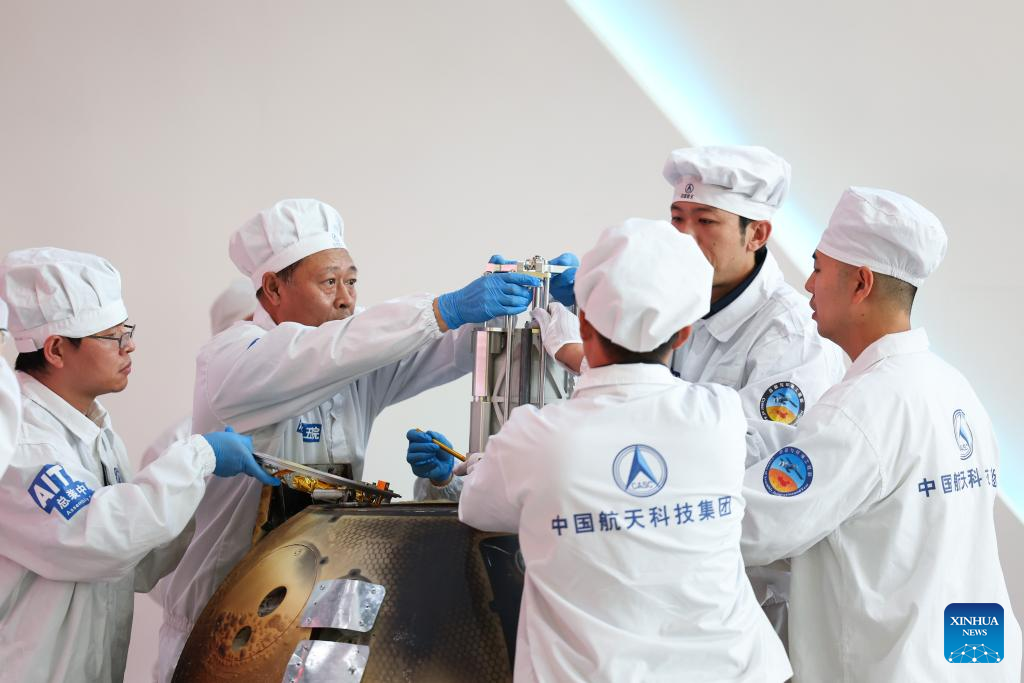17.06.2024
China advances space mission with Europe amid ambitious exploration agenda

This photo taken and beamed back to Earth autonomously by a mini rover released from the lander-ascender combination of Chang'e-6 probe shows a view of the combination itself on the lunar surface, June 3, 2024. (CNSA/Handout via Xinhua)
The development of in-orbit detectors for a joint China-Europe space mission has been completed, and they are poised for integration into a satellite platform located in Europe within the year, according to the mission's chief scientist.
The Solar wind Magnetosphere Ionosphere Link Explorer (SMILE) is a joint mission between the Chinese Academy of Sciences (CAS) and the European Space Agency (ESA) that aims to deepen the understanding of the Sun-Earth connection by observing the dynamic interaction between the solar wind and the Earth's magnetosphere.
SMILE is scheduled for launch in 2025 from Europe's spaceport in Kourou, French Guiana, said Wang Chi, director of the National Space Science Center (NSSC) of CAS, at the first International Conference on Space Science and Technology, hosted by Beijing Institute of Technology, on Saturday.
At the meeting, Wang highlighted China's forward-looking agenda for its space exploration, emphasizing pioneering research into dark matter and gravitational waves in space, the search for habitable planets and signs of alien life, and the advancement of space-based biological and physical science.
Wang unveiled the Hongmeng project, also known as Discovering the Sky at the Longest Wavelengths (DSL), which is an innovative endeavor set to open a window on the Dark Ages of the universe using megahertz-level radio waves. The mission is designed to include one mother satellite and nine daughter satellites operating in a 300-kilometer circular lunar orbit, Wang said.
Also on the roadmap for China's deep-space exploration, the Earth 2.0 mission will see an array of telescopes sent into the Earth-Sun L2 orbit to explore habitable, Earth-like planets outside the solar system.
Wang also cited the Enhanced X-ray Timing and Polarimetry (eXTP) project, which will launch payloads into a highly elliptical orbit to explore still-mysterious celestial bodies like black holes and neutron stars.
The eXTP project has already reached out to scientists from more than 20 countries, including Italy, Germany and France, with offers to cooperate.
China is also expected to launch satellites such as Taiji-2 into a solar orbit to form a constellation with Taiji-1, which was sent into space in 2019, and undertake space-based gravitational wave detection, according to Wang.
French space scientist Pierre-Yves Meslin outlined the progress of Detection of Outgassing RadoN (DORN), a scientific instrument developed by French scientists and carried by China's Chang'e-6 lander, and praised the successful cooperation between France and China.
A consortium of scientists from China, France and Russia also presented their latest findings and perspectives in the field of space science at the meeting.
Quelle: Xinhua
----
Update: 27.06.2024
.
Weight of samples retrieved by Chang'e-6 to be revealed on Friday
The weight of the samples collected from the far side of the moon by the Chang'e-6 mission will be made public on Friday, the China National Space Administration said on Thursday.
Quelle: Xinhua
+++
China plans new deep space exploration missions
China is scheduled to launch the Tianwen-2 mission around 2025 for asteroid exploration, the Tianwen-3 mission around 2030 to collect Martian samples and the Tianwen-4 mission also around 2030 to explore the Jovian system.
Quelle: Xinhua
+++
Returner of Chang'e-6 lunar probe opened after arrival in Beijing

The returner of the Chang'e-6 lunar probe is opened during a ceremony at the China Academy of Space Technology under the China Aerospace Science and Technology Corporation in Beijing, capital of China, June 26, 2024. The returner of the Chang'e-6 lunar probe was opened at a ceremony in Beijing on Wednesday afternoon.
During the ceremony at the China Academy of Space Technology under the China Aerospace Science and Technology Corporation, researchers opened the returner and examined key technical indicators. (Xinhua/Jin Liwang)
The returner of the Chang'e-6 lunar probe was opened at a ceremony in Beijing on Wednesday afternoon.
During the ceremony at the China Academy of Space Technology under the China Aerospace Science and Technology Corporation, researchers opened the returner and examined key technical indicators.
Researchers involved with the ground application system will later carry out work related to sample storage, analysis and research as planned.
The Chang'e-6 probe returner touched down on Tuesday, bringing back to Earth the first samples ever collected from the far side of the moon.

The returner of the Chang'e-6 lunar probe is opened during a ceremony at the China Academy of Space Technology under the China Aerospace Science and Technology Corporation in Beijing, capital of China, June 26, 2024. The returner of the Chang'e-6 lunar probe was opened at a ceremony in Beijing on Wednesday afternoon.
During the ceremony at the China Academy of Space Technology under the China Aerospace Science and Technology Corporation, researchers opened the returner and examined key technical indicators. (Xinhua/Jin Liwang)

The returner of the Chang'e-6 lunar probe is opened during a ceremony at the China Academy of Space Technology under the China Aerospace Science and Technology Corporation in Beijing, capital of China, June 26, 2024. The returner of the Chang'e-6 lunar probe was opened at a ceremony in Beijing on Wednesday afternoon.
During the ceremony at the China Academy of Space Technology under the China Aerospace Science and Technology Corporation, researchers opened the returner and examined key technical indicators. (Xinhua/Jin Liwang)
Quelle: Xinhua
